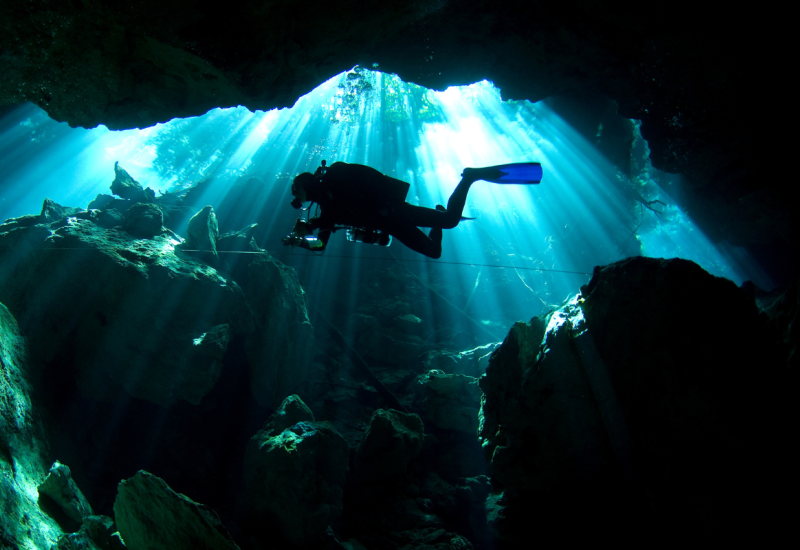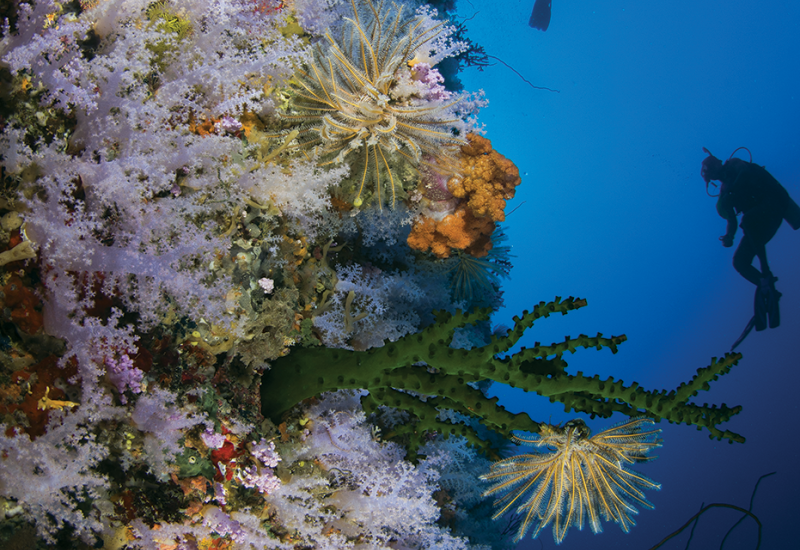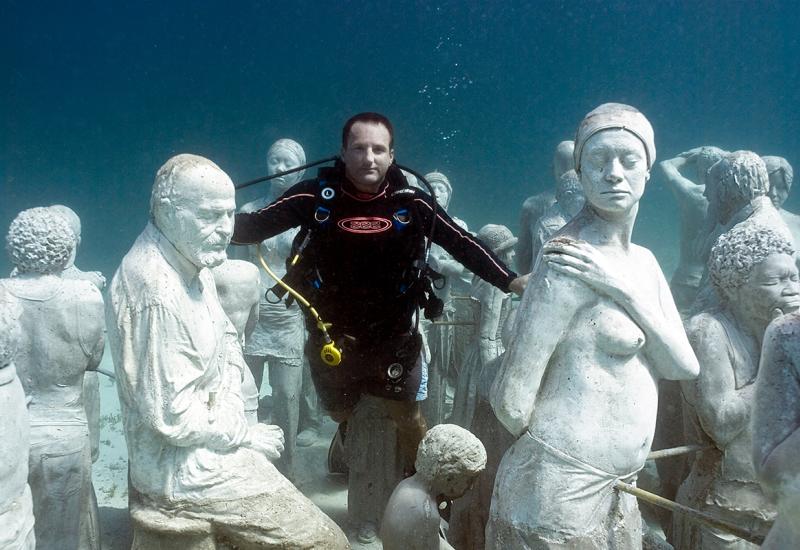What It’s Like ... To Dive with a Sailfish
I’m snorkeling 10 feet underwater with no bottom in sight, as a large fleet of fishing boats is fast-trolling lines with giant shark hooks, trying to capture the same fish I’m attempting to photograph. Getting between a food source and a 6-foot predator capable of bursts of speed more than 60 miles per hour might seem like insanity, but it’s doubly dangerous when you consider this prize billfish’s mighty bill is a formidable weapon that could skewer me and turn me into shish kebab.
At this spot halfway between Mexico’s Isla Mujeres and Cancun, more than 25 sailfish have concentrated below a shimmering school of Brazilian sardines, flashing brilliant neon colors as they ready their attack. A huge sailfish with a 3-foot rapier on its mouth rockets past me and into the large, slow-moving ball of sardines; the baitball explodes like fireworks — first one sailfish, then another bursts in to feed on the stunned fish.
It’s an example of rare behavior called cooperative feeding, witnessed in only a few species like whales and dolphins. Pairs of sailfish take turns swimming into the school while the rest take up positions outside the ball, moving in unison like sheepdogs to herd the hapless sardines against the surface. Out of breath, I swim to the surface and gasp for air, and am nearly bombarded by screaming pelicans and gulls that are diving into the moveable feast below.
I wait a brief minute before diving down again, not wanting to miss out on the action. A small group of panicked sardines tries to use me as a shield against the blur of jousting sailfish as they race in to feed, slashing their bills just inches from my camera lens. I know I should fear for my life, but I realize this creature has the control and accuracy to thread a needle. Breathless from the encounter, I kick back to the surface, grateful that I’ve just fenced with a sailfish and lived to tell the tale.
I’m snorkeling 10 feet underwater with no bottom in sight, as a large fleet of fishing boats is fast-trolling lines with giant shark hooks, trying to capture the same fish I’m attempting to photograph. Getting between a food source and a 6-foot predator capable of bursts of speed more than 60 miles per hour might seem like insanity, but it’s doubly dangerous when you consider this prize billfish’s mighty bill is a formidable weapon that could skewer me and turn me into shish kebab.
At this spot halfway between Mexico’s Isla Mujeres and Cancun, more than 25 sailfish have concentrated below a shimmering school of Brazilian sardines, flashing brilliant neon colors as they ready their attack. A huge sailfish with a 3-foot rapier on its mouth rockets past me and into the large, slow-moving ball of sardines; the baitball explodes like fireworks — first one sailfish, then another bursts in to feed on the stunned fish.
It’s an example of rare behavior called cooperative feeding, witnessed in only a few species like whales and dolphins. Pairs of sailfish take turns swimming into the school while the rest take up positions outside the ball, moving in unison like sheepdogs to herd the hapless sardines against the surface. Out of breath, I swim to the surface and gasp for air, and am nearly bombarded by screaming pelicans and gulls that are diving into the moveable feast below.
I wait a brief minute before diving down again, not wanting to miss out on the action. A small group of panicked sardines tries to use me as a shield against the blur of jousting sailfish as they race in to feed, slashing their bills just inches from my camera lens. I know I should fear for my life, but I realize this creature has the control and accuracy to thread a needle. Breathless from the encounter, I kick back to the surface, grateful that I’ve just fenced with a sailfish and lived to tell the tale.










